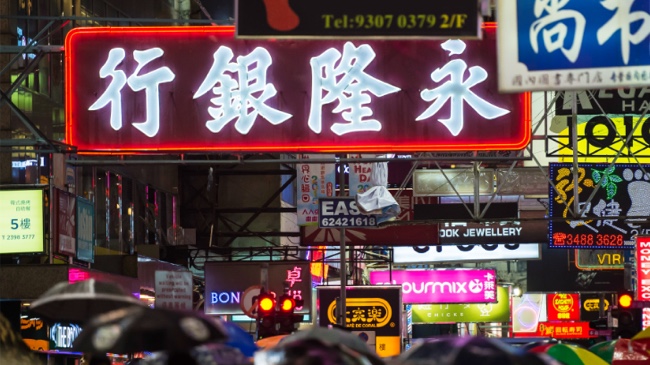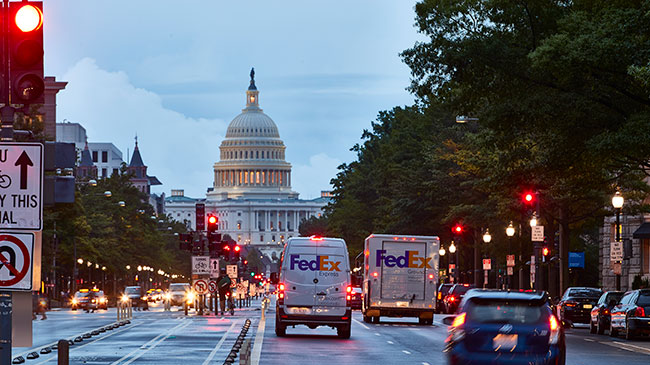How to ship to South Korea
When shipping to South Korea, you need to have the right paperwork in order and understand the different customs clearance procedures. It’s also important to know that a PCCC (Personal Customs Clearance Code) is required for the clearance of all B2C shipments.
Key aspects of shipping to South Korea.
In this article we cover 10 key topics:
1. What documents do I need when shipping to South Korea?
Like with any international shipment, you need to provide an air waybill and commercial invoice. And if the country you're shipping from has a trade agreement with South Korea, you may also need a preferential statement to benefit from reduced customs duties.
Commercial invoice
To avoid unnecessary delays at customs, it’s important to provide a commercial invoice complete with a clear product description and both shipper and receiver details.
The information on the commercial invoice needs to be accurate and in English. Make sure to include a detailed description of the product, as well as the product name, its HS code and the country of origin.
Commercial invoices for B2C shipments should also include contact details of the receiver and their Personal Customs Clearance Code (PCCC).
All values must be in USD. You also need to state the price per item and the exact quantity of each item being shipped. Make sure there are no spelling mistakes or incorrect abbreviations as this can also cause delays.
2. Preferential statement
This document verifies where a product was made and is required when applying for reduced customs duties based on a South Korean free trade agreement. It can be issued by either the producer, manufacturer or exporter.
Include it on the commercial invoice or any other document relating to the goods. Bear in mind, for it to be valid, it should follow a standard template like the one below.
The exporter of the products covered by this document (customs authorization Nr……….①) declares that, except where otherwise clearly indicated, these products are of …………………….② preferential origin.
Place …………………………………………………………………………………..
Date....………………………………………………………………………………….
Signature of the exporter.
The name of the person signing the declaration
① Approved Exporter number (for products above €6,000) Otherwise this part can be left out.
② Country of Origin
3. What is the Exporter Customs Authorization Number?
It's a unique identification number assigned to exporters by the competent authority of the exporting country.
4. What is a Personal Customs Clearance Code (PCCC) and how do I get one?
It's a 12-digit number prefixed with a ‘P’ issued by the South Korean authorities to its citizens. A PCCC allows individuals to clear customs when shipping goods, in and out of the country.
South Korean citizens can generate a PCCC online or request it through the customs office. Foreigners living in South Korea may use their nationality and passport number instead of a PCCC.
5. South Korea's trade agreements
(Free) trade agreements allow businesses and individuals from member countries to enjoy reduced customs tariffs and/or simplified procedures. As of February 2020, South Korea has trade agreements with 25 countries and territories – more agreements are currently being negotiated.
The three major free trade agreements (FTA) are with:
- The EU (EU FTA)
- The US (KORUS FTA)
- China (KR-CN FTA)
You can find detailed information on all South Korean trade agreements and the paperwork required for each in the database of the International Trade Center.
6. Which products need to be certified for South Korea?
If you're importing foods, cosmetics, drugs, food supplements, medical devices or electronics, they have to be certified by South Korean authorities. Uncertified products may be seized by customs and the importer may be fined.
When a shipment enters South Korea, it will clear customs through a formal or informal procedure depending on the value of the shipped goods and any regulations that may apply to them.
7. Informal clearance
Informal clearance is a simple and fast customs procedure that doesn't require a customs broker or additional paperwork. South Korea has two types of informal clearance procedures: Informal A and Informal B. While both are simplified procedures, only Informal A allows for duty-free import of goods.
8. Formal clearance
Formal clearance, or freight mode, is used for high-value, bulk or regulated goods. This process requires advance payment of duties, additional paperwork, and a customs broker to oversee the clearance process. The receiver can choose to use their own broker, or a broker provided by the carrier.
9. Informal and formal customs clearance in South Korea
Informal clearance A |
Informal clearance B |
Formal clearance |
|
|---|---|---|---|
Eligible shipments and values |
|
|
|
Customs processing time |
|
|
|
Required documentation |
|
|
|
10. What products are you shipping to South Korea?
If you're shipping regulated goods, check the list below for a detailed guide on the documentation you need to provide.
What are the general requirements to ship medication?
When importing pharmaceutical products, remember to include the generic substance name, conditions to be treated and recommended dosage. When shipping prescription drugs, remember to include a copy of the prescription with the shipment.
Import of medicine and health supplements for personal use is limited to:
- Medication: six bottles (or three months dosage)
- Viagra and other drugs posing a risk of overdose: quantities according to prescription
- Health supplements: six bottles
Shipments containing raw materials or products for clinical study should be approved by the Korea Pharmaceutical Traders Association (KPTA).
Similarly, goods imported for the Ministry of Food and Drug Safety (MFDS) approval will require an MFDS validated import licence.
The following items will always require formal clearance:
- Medication and food supplements containing components devised from CITES listed species
- Items prohibited by the KPTA but supported by a valid MFDS certificate
What documents does the sender need to provide?
What documents does the receiver need to provide?
When importing medications, the shipper may be asked to submit a product license approved by the KPTA. Health supplements are certified by the MFDS.
What are the general requirements to ship medical devices?
Import of medical products is regulated by the Korean Medical Service Act. It requires importers to hold a Ministry of Food and Drug Safety (MFDS) approved business import licence.
You may be exempt from import regulations if you're importing:
- A medical device you've been using abroad and need to continue using in South Korea
- Licensed foreign products that can neither be replaced by a South Korean equivalent, nor certified in South Korea
- A device that will be used for an emergency patient according to Article 2 of Emergency Medical Service Act in South Korea.
If a device is brought into South Korea for a limited period of time, the shipper may apply for relief of duties under temporary import. The request can be filed with South Korean customs.
What documents does the sender need to provide?
What documents does the receiver need to provide?
- Import license
- Customs clearance forecast filed with the Korean Medical Devices Industry Association (KMDIA)
- Certificate of the KMDIA report
What are the general requirements to ship electronics?
The import of electronic devices to South Korea is strictly regulated.
It's important to be aware that only individual purchases with a maximum of one item per person qualify for informal customs procedure. Unless the receiver holds an import license.
What documents does the sender need to provide?
What documents does the receiver need to provide?
If you're importing electronics for personal use, you need to clearly state the reason for import as private use and provide customs with a Personal Customs Clearance Code (PCCC).
For licenced importers and individuals importing more than one item, you need to:
- Provide an Electrical Appliances Safety Certificate
- Apply for import approval through the e-customs system UNI-PASS
What documents does the sender need to provide?
What documents does the receiver need to provide?
- Material Safety Data Sheet (MSDS)
- Confirmation of Chemical Substances
If a product is classified as a hazardous chemical substance, remember to include an Import Permit issued by the local Environment Office.
Shipping requirements and documentation may vary between carriers. This website is designed to provide general information related to shipping. If you’re unsure of the shipping requirements that apply to you, check with your carrier. Make sure to check the rules and regulations of the country you’re shipping from and to prior to shipping. You can find this information on government websites.


